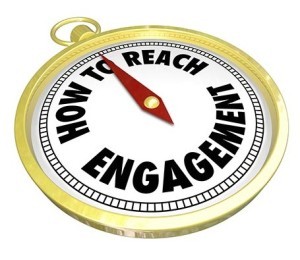Every digital marketer knows a thing or two about campaign planning. Digital campaigns are the hallmark of every marketing strategy and can help drive insights that lead you towards a specific goal whether that’s a new product or service offering. Creating a digital marketing campaign is no small feat whether you’re a small organization or a large enterprise. It takes time, strategy, precision, and detail to launch a campaign from idea to execution. With a plethora of platforms and tools to incorporate into your strategy, campaign planning is more than just creating online advertisements or sending out emails. The sheer number of planning alone can set your business up to succeed or fail if steps towards the execution falls short or is missing pertinent information.
Mistakes happen, platforms fail us and sometimes the execution does not always match the initial vision. Here are 5 campaign planning fails that can set your efforts off course and have you shivering in your seat.
- Great Ideas That Are Poorly Executed
We have all seen big brands that get their execution completely wrong because they didn’t understand their audience, target the wrong demographic, had incorrect budgets, etc. You can probably name a few campaigns that had you scratching your head wondering “What were they thinking” or “How did they miss the mark?”. Ideation is a staple of creating any campaign, but you have to do the research to ensure every critical aspect of the campaign is covered and matches the intended launch goals. In each step of the campaign process you have to take the time to build out every detail otherwise you have a missed opportunity for success.
For example, let’s say you’ve got all the necessary information for an amazing giveaway but didn’t get the eligibility requirements reviewed by your legal team. This can prove to be a costly and potentially serious mistake for your company because you’ve chosen the wrong winner or didn’t make the rules clear. Perhaps you’re partnering with a client or influencer for an upcoming campaign and forget to select “paid partnership” on social media and your ads get flagged and removed from the platform. Boom, there goes your engagement, impressions, and traffic on that particular digital ad and you have to start over.
Don’t miss the opportunity to see your idea come to life because you skipped a few key steps.
- Missing UTMs & Not Tracking The Performance
These tracking codes can be added to website links in order to help you with an analytics platform (like Google Analytics) which you can use to track the visits from that specific link on your website. However because UTMs are a long string of texts that are added to a URL, many marketers can accidentally complicate their data which can result in big consequences for their campaign results. One of the biggest campaign fails you can have is missing UTMs in your digital marketing whether you’re trying to measure your social media ROI or conduct an A/B test. UTMs can help you monitor and track multiple campaigns and give you the data you’ll need for optimization.
If you’ve included UTMs in your marketing, then congratulations, you’re on the right track, BUT are you tracking the performance? Whether it’s an email newsletter or monitoring the effectiveness of a new CTA, without tracking how the UTM is performing, you’ve essentially launched a rocket that’s dead weight in space. Using a UTM lets you track the most gradual information from the traffic source to the type of a keyword term your visitor came from. With these details you can improve your campaign performance and be able to tell your team what’s resonating with your audience and why.
- Broken or Long Links
Who doesn’t love links? They help drive traffic to your website, can build brand awareness, and can be leveraged in almost every industry to strengthen your online presence. However with the excess of links in rotation from social media to emails, it can be easy to make the common mistake of using broken or long links within your content. You know that irritation that occurs when you’re clicking “add to cart” or click on a coupon within your email and you’re directed to a broken page? Those momentary feelings of frustration can be detrimental to your customers who may not have the time, patience, or bandwidth to search for the right page. Using broken links can create a tremendous loss of revenue for your business and alter your SEO performance.
Long links are (November 03, 2021)’s news. Here at Bitly, we obviously love our shortened links. Whether it’s on a landing page, in emails, or within blog content, shortened links have a lot of power behind them. Links can represent your brand and in the vast sea of website links that live online, you want yours to stand out. Short links are memorable, trackable, space savers, and versatile. Why include long links that can get in the way of what you really want your customers to focus on? Make your campaign stand out from the rest with branded short links using Bitly.
- Poor Copy or Creative Decisions That Sparks Outrage
Cancel culture is alive and well in a climate that can take a screenshot and make it go viral in an instant. No one can escape the barrage of online users who are quick to identify and point out even the smallest marketing mistakes. There has to be a unique blend between creative decisions and business in order to inspire people to invest in your products and services. Creative campaigns are clever, original, and often appeal to the masses, but creativity can go wrong when it misses the pulse of a trend or trivializes a concept. Before you decide to go live with a creative campaign, consider what you’re selling, what your brand represents and if this is going to be viewed as controversial. Hire experts and do the research for any creative decision that might be misinformed or go against the grain of your business ideals.
Poor copy can make anyone cringe. Whether it’s bad grammar, misspelled words, or cheesy one-liners, poor writing can make or break a campaign. While any customer can be entranced by pretty visuals and stunning media assets, the captions, text, or copy can ruin even the most well thought out campaign. Make sure your copy reflects the audience you are trying to reach and connects with the campaign you are running. Generally you should always avoid slang, jargon, and cliches that are inauthentic and off brand. Simplicity is best with copy, you don’t need to write a novel in order to convince a customer that you have a good product.
- Forgetting The Audience The Campaign is Meant For
Audience is everything when it comes to running a campaign. When you don’t understand who your audience is or what they care about, your campaign will fail. Think about your customer, do you know what they love about your product? What industry do they come from? How do they use your services? You should consider all of these are questions before investing the time and money into a campaign. If you decide to hop on a trend, you could end up alienating your core audience who doesn’t understand the messaging. Being intentional with your audience information can set your campaign up for success by ensuring you aren’t missing any relevant details like their age, niche, demographic, etc. While there it always an opportunity to expand your funnel and target new audiences, that should be done intentionally and strategically, not by accident in a new campaign.
Digital & Social Articles on Business 2 Community
(19)







